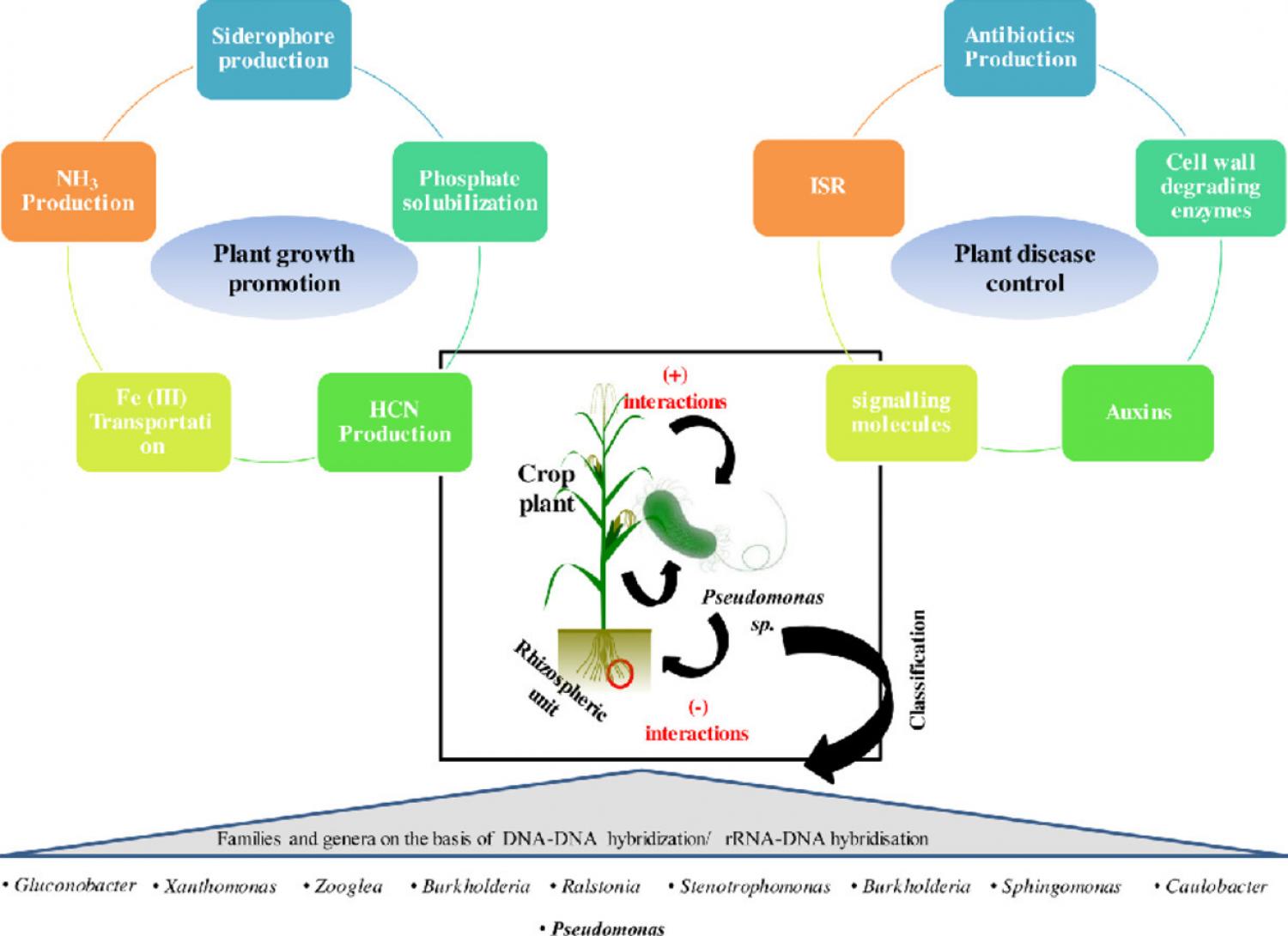
Numerous microbial communities show synergistic and antagonistic interactions among themselves, resulting in benefit and harm to either or both the associated members. The association holds accountability for nutrients recycling and energy drift, resulting in the availability of macronutrients unavailable and insoluble forms of rhizospheric nutrients, crucial for vital processes in plants, e.g., act as co-factors of various phyto-enzyme and redox mediators. Plant growth promoting rhizobacteria are known to enhance plant growth by increasing these macronutrients availability during their plant root colonization. In comparison to any other genera, Pseudomonas is the most favored bioinoculant due to its significant properties in both plant growth and phytopathogen control during its synergistic association with the host plant. These properties include siderophore production, phosphate solubilization, nitrogen fixation, phenazines, antibiotics, and induced systemic resistance carried out by various Pseudomonas species like Pseudomonas fluorescens, Pseudomonas putida, and Pseudomonas syringae. The association of Pseudomonas with crop plants procures several secretory and electron-based feedback mechanisms in order to regulate the plant growth and phytopathogen control activities through the secretion of several phytohormones (auxins, gibberellins, Indole-3-acetic acid), secondary metabolites (flavonoids) and enzymes (aminocyclopropane-1-carboxylate, phenylalanine ammonia-lyase). Ecologically significant applications of Pseudomonas in biocontrol and bioaugmentation are crucial for maintaining food security.
